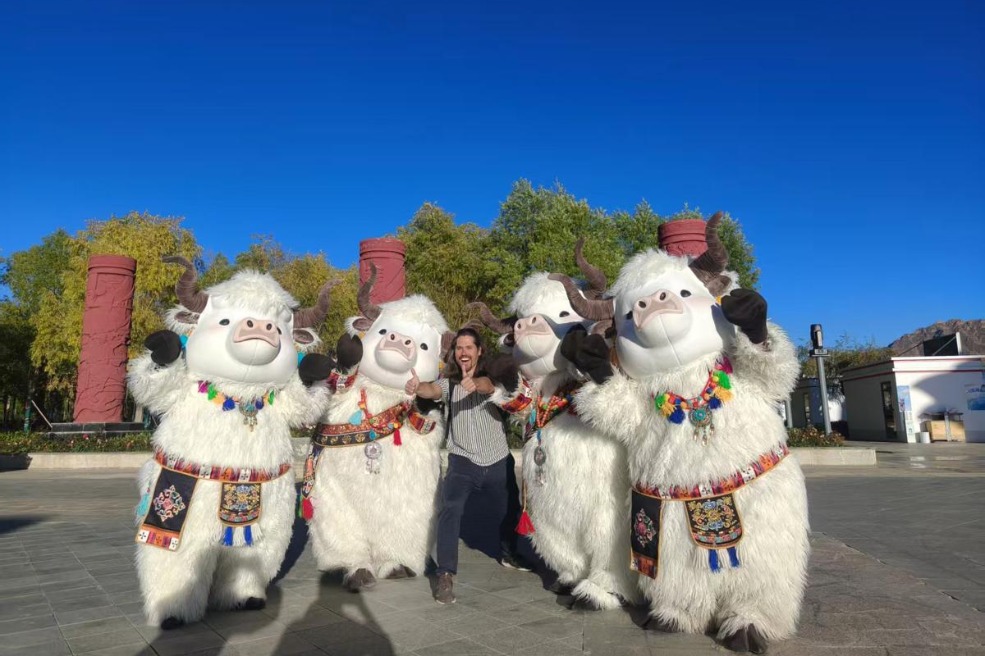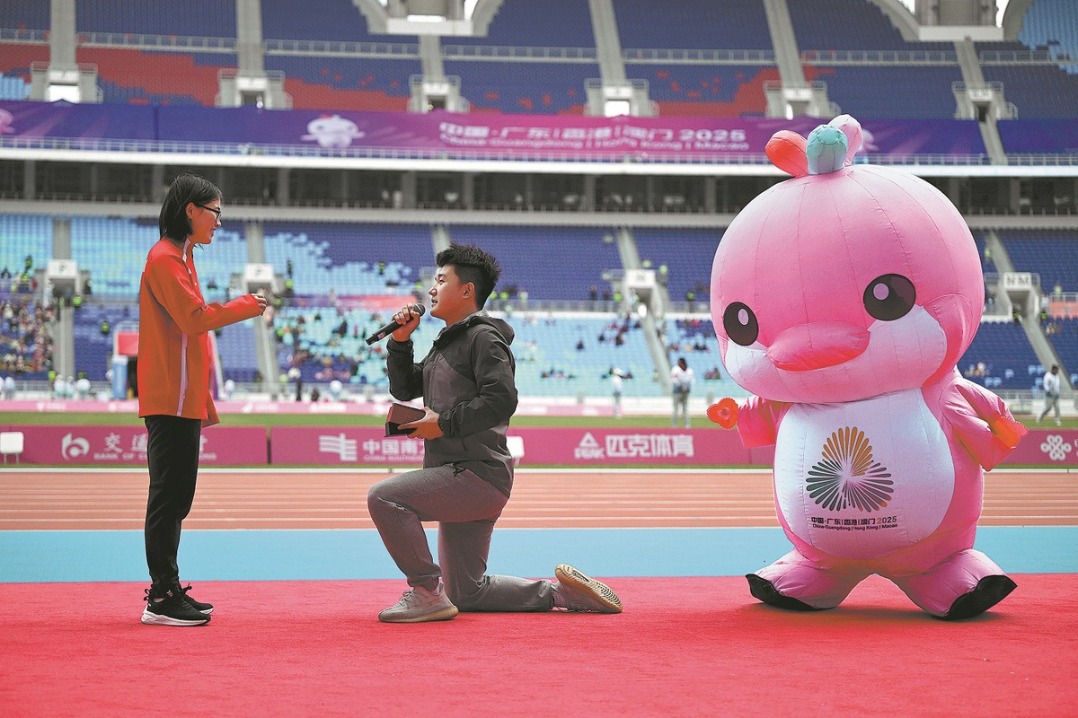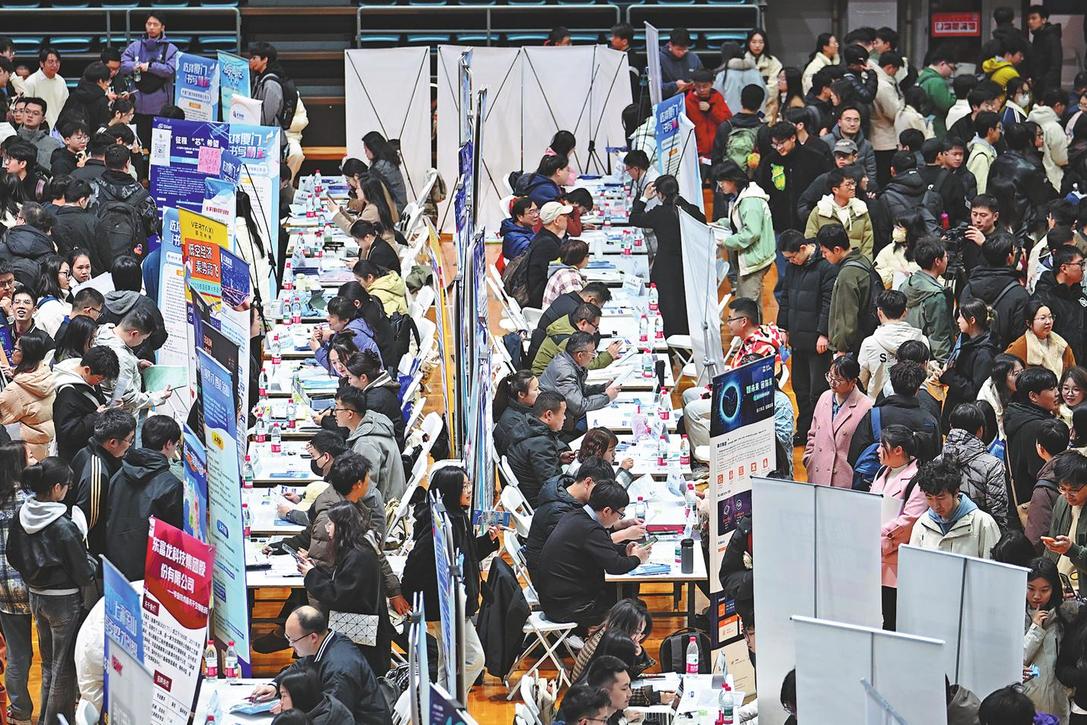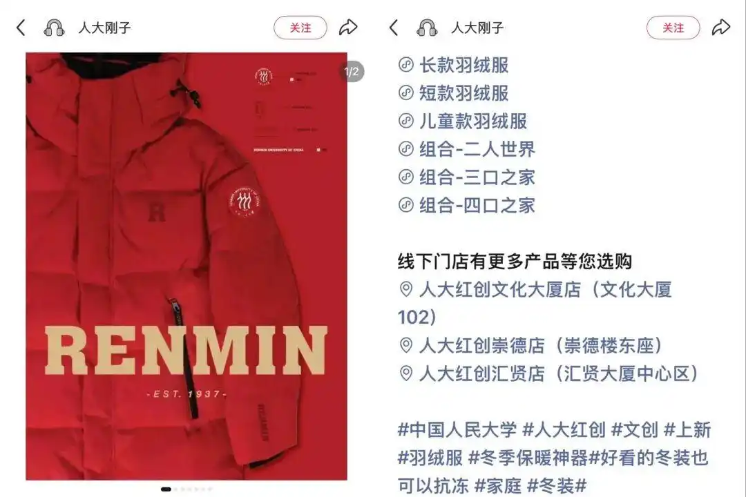Beijing museum brings festivities to NYC

Clad in red and adorned with festive charms, visitors reveled in the joyous beat of drums and a lively lion dance at a Chinese New Year celebration at the China Institute in New York — which shimmered in gold and red to reflect the grandeur of Prince Kung's Palace.
The palace, one of the finest and best-preserved princely residences of the Qing Dynasty (1644-1911), is a nationally protected cultural relic and also a first-class museum that is a must-see for travelers to China.
A collaboration between the museum in Beijing and the institute in Lower Manhattan brought the vibrant Chinese New Year atmosphere to New Yorkers on Sunday, as family and friends gathered to celebrate the Year of the Snake.
Prince Kung's Palace is adorned with intricate paintings, brick carvings, lattice windows and door lintels, all featuring bat motifs. In Chinese culture, bats symbolize blessings and good fortune from the Chinese character fu, signifying the arrival of prosperity.
Liu Huailin, the deputy director of the Prince Kung's Palace Museum, told visitors that the cultural symbolism has earned the palace the title of "Garden of a Thousand Blessings".
"Today, we're bringing together traditional Chinese folk activities and the mansion's rich culture to create a hands-on experience like no other, through traditional crafts and cultural activities," Liu said.
The Chinese character fu also holds deep significance during Chinese New Year. Under the theme 'Fortune's Arrival', Prince Kung's Palace Museum brought the ideographic symbol to life through interactive cultural experiences inspired by its historic furniture collection.
Visitors explored workshops such as woodblock printing of fu, intricate paper-cutting, and mortise-and-tenon joinery — an ancient technique that creates strong, nail-free connections through precisely interlocked wooden structures, a hallmark of traditional palace architecture.
"We went to the wood-joinery workshop, which was great, and we got to take apart and put together and learn how they work," Dan Harlan of Brooklyn told China Daily. "They are also very small-child-friendly."
He said his wife is from China, and he wants their daughter to learn more Chinese and about Chinese culture.
"We're teaching our son Mandarin and showing him a lot about Chinese culture," said Michelle Jordan, originally from China. "It's very important for us that he knows all about his heritage."
Visitors also participated in other workshops showcasing the rich Chinese heritage, from shadow puppet making and Chinese opera facial painting to lacquer fan crafting and herbal sachet making, each reflecting deep-rooted traditions.
"It encourages you to go out and support. I didn't even know this institute was here, so I'm happy they had the lion dances, crafts and activities for both children and adults," said Zulie Rodriguez, who wore a red cloak adorned with golden snake patterns.
She said she also enjoyed calligraphy and collecting stamps depicting Prince Kung's Palace architecture.
Rodriguez said she was born in the Year of the Snake, which is also known as the "little dragon".
"It feels like a transformation because of the snake," she said. "A good ending and a new beginning."
The experience made a strong impression on her, and with China's new 240-hour visa-free transit policy, she said she is excited to travel to China and explore the country.
Today's Top News
- UN envoy calls on Japan to retract Taiwan comments
- Innovation to give edge in frontier sectors
- Sanctions on Japan's former senior official announced
- Xi stresses importance of raising minors' moral standards
- Coordinated reform key to country's growth
- Shandong gives new life to traditions





























